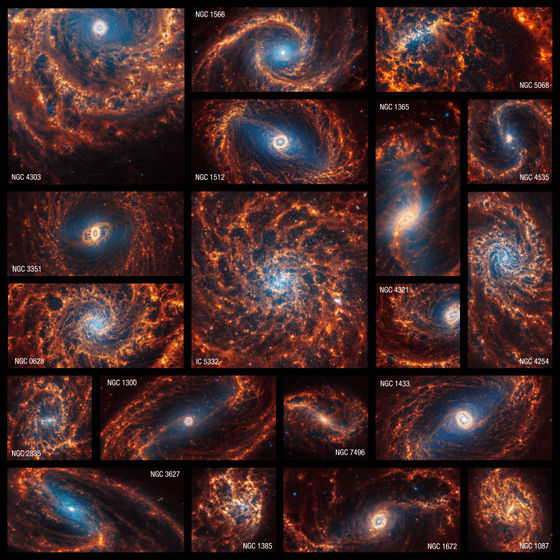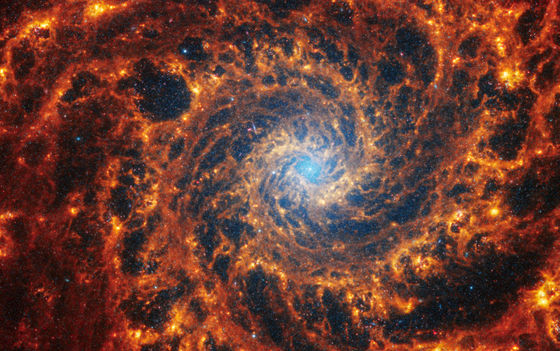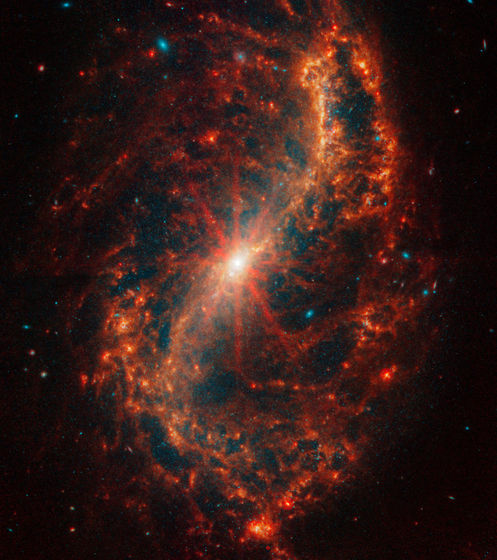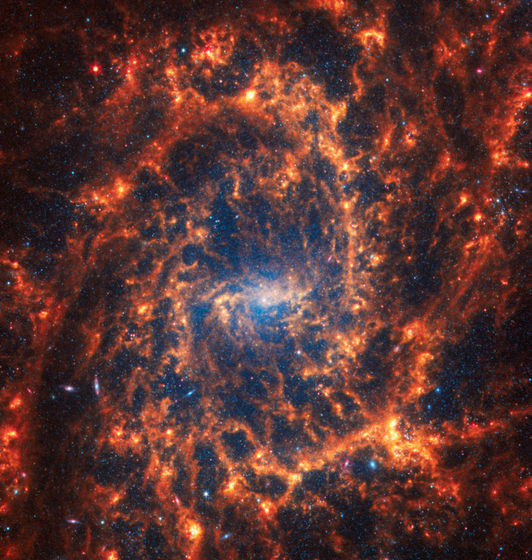NASA releases photos of 19 galaxies captured by the James Webb Space Telescope, revealing the structure of spiral galaxies through invisible infrared observations

NASA has released images of 19 spiral galaxies observed using the Near-Infrared Camera (NIRCam) and Mid-Infrared Observatory (MIRI) aboard the James Webb Space Telescope. These images clearly capture the process of star birth and the mysterious structure of galaxies, which could not be captured using conventional visible light observations.
NASA's Webb Depicts Staggering Structure in 19 Nearby Spiral Galaxies - NASA Science
The James Webb Space Telescope image released by NASA was created as part of the large-scale project ``Physics at High Angular Resolution in Nearby GalaxieS (PHANGS)'' in which more than 150 astronomers are participating. PHANGS has included observational data in visible light and radio waves collected by the Hubble Space Telescope and others, but new knowledge has been brought about by the near-infrared and mid-infrared observations provided by the James Webb Space Telescope. Ta.

Below is the spiral galaxy '

Looking at NGC 628 as a whole using images taken by the James Webb Space Telescope, we can see a blue center filled with old stars and a spiral with a spiral filament structure similar to the cross-section of a nautilus shell. You can see that there is. You can also see a large oval-shaped structure called a 'bubble' in the lower right.

'New images from the James Webb Space Telescope surprise even researchers who have studied the galaxy for decades,' said Janice Lee of the Space Telescope Science Institute in Baltimore. It is depicted at the finest scale ever observed and tells the story of the cycle of star formation.'
A bright red

Some galaxies have spherical shell-like structures called ``shells,'' and Adam LeRoy of Ohio State University explains, ``These holes are formed when one or more stars explode.'' 'It may have been created by drilling a huge hole in the interstellar medium.'

In addition to these images, the PHANGS team also released the largest catalog to date of observations of 100,000 star clusters. 'The amount of analysis that can be done with these images is far greater than what our team can handle,' said Eric Rosolowski of the University of Alberta in Canada. 'We want to support the community so that all researchers can contribute. I’m excited about what I can do.”
Related Posts:
in Science, Posted by log1l_ks







